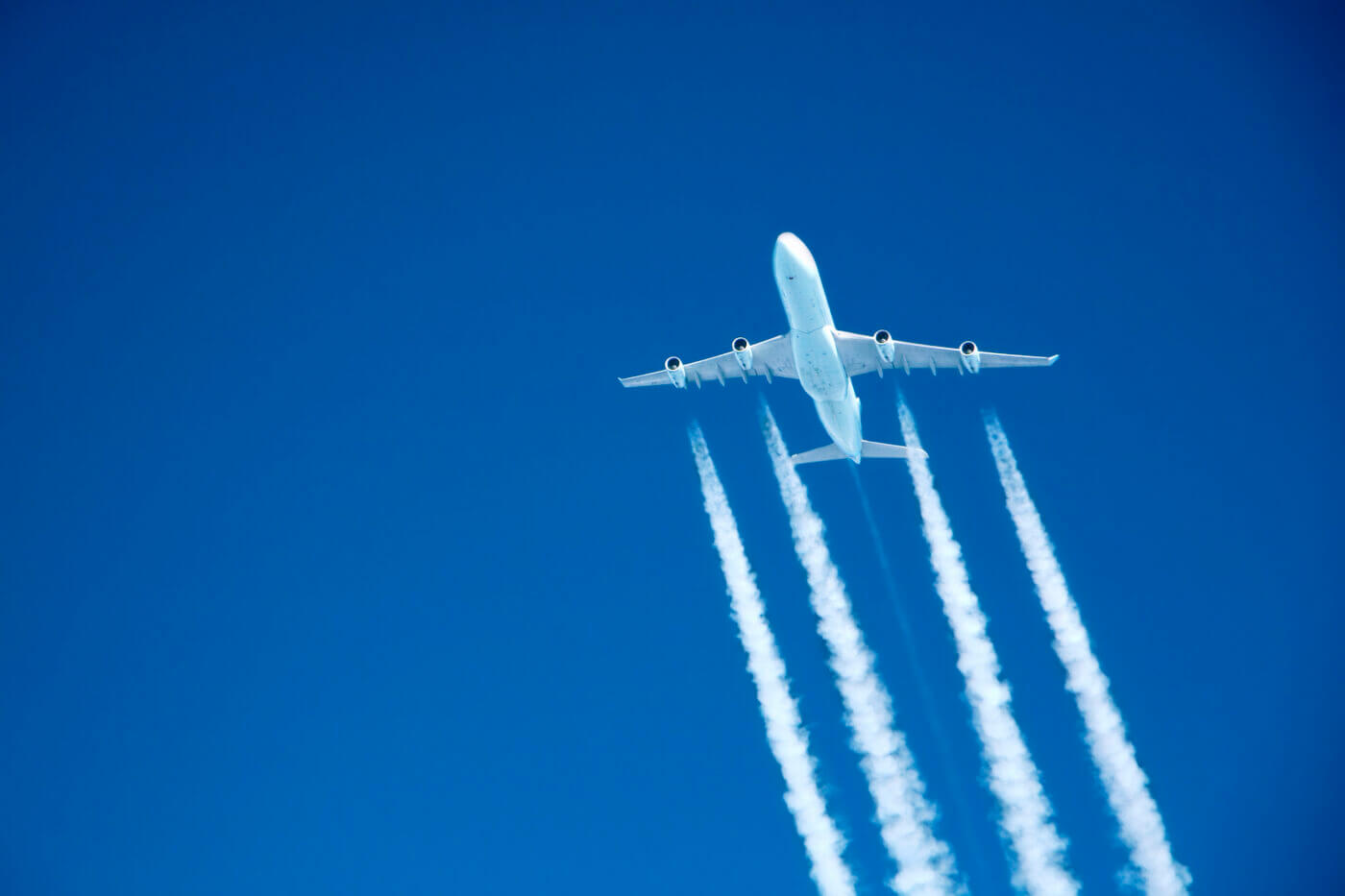
Beyond carbon dioxide: Aviation needs a multi-pronged strategy to address contrails and reduce climate impacts
When it comes to aviation’s role in climate change, most discussions focus on carbon dioxide (CO₂) emissions. But another major driver of warming is often overlooked: contrails. These wispy cloud formations – short for condensation trails – form when aircraft fly through ice-supersaturated regions (ISSRs) at high altitudes, emitting soot particles that serve as nuclei for ice crystal formation. While short-lived, contrails can trap heat and contribute significantly to warming.
While some early studies estimated contrails contribute up to two-thirds of aviation’s total warming effect, more recent analyses suggest the figure may be closer to one-third. There is still some uncertainty, but new analysis from CATF makes one thing clear: contrails must be tackled alongside CO₂ emissions if we are serious about reducing aviation’s climate impact.
Addressing contrails is essential for sustainable aviation
Aviation climate policies have largely centered on reducing CO₂ emissions. While decarbonizing jet fuel remains a critical long-term goal, CO₂ reductions alone won’t be enough to mitigate the industry’s climate footprint. Contrails exert a short-term but intense warming effect, meaning reducing them could yield near-immediate climate benefits – potentially faster than cutting CO₂ alone.
Ignoring contrails while focusing solely on CO₂ leaves a major climate lever untouched. That’s why a comprehensive approach is needed – one that tackles both CO₂ and non-CO₂ effects.
Relying on a single solution for contrails is risky – we need multiple approaches
Contrail formation depends on several factors, including fuel composition, engine technology, and atmospheric conditions. This complexity makes it risky to rely on any one solution to mitigate contrail effects. Instead, a combination of approaches – including cleaner fuels, low-soot engine designs, and smarter flight routing – will likely yield the best results.
Some mitigation strategies can be deployed today, while others require further research and investment. Below are the three primary areas for reducing contrails:
1. Cleaner fuels: Reducing soot through fuel treatment and SAF
One of the most effective ways to reduce contrails is to lower the amount of soot produced by aircraft engines. Since soot particles act as the initial nuclei for contrail formation, reducing their presence in exhaust emissions can limit ice crystal growth and shorten contrail lifespan.
Two main fuel-based strategies are under consideration:
- Fuel treatment: Further refining jet fuel to remove aromatics, particularly naphthalene, in order to reduce soot emissions. This is a viable short-term mitigation option, though it is energy-intensive and would increase CO₂ emissions at the refinery level.
- Sustainable aviation fuel (SAF): SAF blends, which contain fewer aromatics than conventional jet fuel, have been shown to reduce soot emissions by 50-70%, leading to fewer and weaker contrails. However, global SAF supply remains limited.
Given the current SAF supply constraints, a smarter strategy is needed. Instead of blending small amounts of SAF into all flights, research suggests that prioritizing high-contrail routes could be 9-15 times more effective at reducing warming. This approach would direct limited SAF resources where they have the most impact, maximizing climate benefits in the short term.
2. Engine modifications: Optimizing fleets for lower soot emissions
Advancements in engine technology present a significant opportunity to mitigate contrail formation by reducing soot emissions. Newer aircraft engines burn fuel more efficiently and produce fewer soot particles, which leads to weaker and shorter-lived contrails.
For example, the CFM Leap-1B engine, used in Boeing’s 737 MAX aircraft, has demonstrated lower soot emissions, potentially reducing contrail formation. As airlines modernize their fleets, these newer, lower-soot engines could help cut aviation’s non-CO₂ climate impact.
However, since fleet turnover takes time, additional mitigation strategies – such as using SAF and smarter flight routing – must be implemented in parallel to maximize near-term contrail reductions.
3. Smarter flight routing: Avoiding contrail-forming conditions
Given that contrails only form in ice-supersaturated regions (ISSRs), adjusting flight paths to avoid these areas could dramatically reduce contrail occurrence. Key methods for this sort of contrail avoidance include:
- Weather forecasting models: Improved weather models could help airlines predict ISSRs and adjust flight plans accordingly. However, current humidity forecasts are not yet reliable enough for large-scale deployment.
- AI and satellite monitoring: Emerging AI-driven contrail detection systems offer promising results. Google, in collaboration with American Airlines, conducted a trial using AI-assisted routing, which achieved a 54% reduction in contrails by optimizing flight paths.
- Altitude adjustments: Research suggests that small altitude changes (~2%) on high-contrail flights could cut contrail-related warming by nearly 57% – with minimal fuel penalties (~0.03%).
These operational strategies may not be applicable in all situations (i.e., a plane cannot climb to avoid an ISSR after it has begun its landing decent), but to the extent this can be incorporated into ATC procedures, these strategies could provide near-term contrail reductions while longer-term solutions like SAF scale up.
Policy action is needed to integrate contrail mitigation into climate strategies
Despite growing recognition of contrail-related warming, current aviation regulations focus almost entirely on CO₂ emissions. This leaves a critical gap in aviation climate policy.
Governments, industry leaders, and regulatory bodies like the International Civil Aviation Organization (ICAO) must work to incorporate non-CO₂ mitigation strategies into their frameworks.
Key areas for policy action include:
- Incentivizing the targeted use of SAF on high-contrail flights.
- Funding research into low-soot engine designs and cleaner combustion technologies.
- Enhancing air traffic management systems to enable real-time contrail avoidance strategies.
Contrail mitigation is one of the fastest ways to reduce aviation’s climate impact
These measures could significantly reduce aviation’s near-term warming impact, making them a critical component of sustainable aviation policy.
Because contrails dissipate within hours, mitigation efforts can provide immediate climate benefits – unlike CO₂ reductions, which take decades to show results. By tackling contrails alongside CO₂ emissions, we can make meaningful progress toward reducing aviation’s full climate footprint.
Aviation needs a multi-pronged approach, and contrail mitigation must be a core part of that plan.



